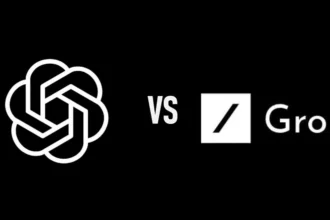Unlock the secret to perfect data scaling with the powerful Min Max Scaler! If you’ve ever wondered how to effortlessly scale your data to fit within a specific range, then this is the blog post for you. We’ll dive into the fascinating world of Min-Max Scaler, shedding light on its importance, comparing it to StandardScaler, and exploring when and how to use it effectively. Get ready to transform your data into its optimal form and discover why Min-Max Scaler is the unsung hero of data normalization. Let’s dive in and demystify the art of data scaling!
Table of Contents
ToggleUnderstanding Min-Max Scaler
Min-Max Scaler stands as a sentinel at the gate of many machine learning endeavors, ensuring that the data entering the realm of algorithms is suitably normalized. Its primary role is to scale down the features of a dataset so that they fit within a designated range, most often from 0 to 1. This process, akin to a blacksmith tempering steel, strengthens the dataset’s uniformity without warping the intrinsic distribution of its values.
Imagine a dataset as a vibrant palette of paints, with each feature a distinct hue and shade. Just as an artist mixes colors to achieve a balanced composition, the Min-Max Scaler harmonizes the scales of different features, bringing them onto a common canvas where each value is a stroke between the boundaries of 0 and 1. This equal footing allows machine learning models to perceive patterns without distraction from features screaming in disproportionate magnitudes.
Within the confines of an Excel spreadsheet, the Min-Max Scaler is the alchemist, transforming the raw numerical lead into analytical gold. It does so by assigning the smallest number in the dataset to 0, the largest to 1, and proportionally scaling all other numbers in between. This delicate balance is crucial for models that are sensitive to the scale of data, such as neural networks and distance-based algorithms.
| Fact | Description |
|---|---|
| Min Max Scaler Essence | Transforms features to a 0-1 range without changing the original distribution. |
| Need for MinMaxScaler | Ensures uniform feature scale for improved machine learning model performance. |
| Min-Max Scaler in Excel | Linearly scales features, making the minimum value 0 and the maximum 1. |
| Normalization | MinMax Scaler is a technique to shift and rescale values for data analysis and modeling. |
Employing the Min-Max Scaler is not merely a mechanical step; it is an act of preparing your data for a journey through the complex landscape of algorithms. By doing so, you ensure that each feature contributes fairly to the final outcome, allowing the true signal within your data to emerge, untarnished by the vagaries of scale.
As we navigate through the digital age, the use of Min-Max Scaler becomes increasingly significant, serving as a cornerstone for data scientists seeking to lay down a robust foundation for predictive models. It is the silent guardian that upholds the principle of equality among variables, ensuring that no feature dominates its counterparts solely because of its magnitude.
In the next sections, we will delve deeper into the comparison with other scalers, explore the importance of Min-Max Scaling, and unearth its limitations and best scenarios for utilization. This journey through the Min-Max Scaler will arm you with the knowledge to harness its power effectively, paving the way for more accurate and reliable data analysis.
MinMaxScaler vs. StandardScaler
Embarking on the journey of machine learning is akin to setting the sails for a voyage across the data sea. And as any skilled navigator would attest, understanding the tools at your disposal is paramount. In the realm of data preprocessing, two prominent instruments—MinMaxScaler and StandardScaler—are often debated for their efficacy and application.
Imagine you are a sculptor, and the raw stone before you is the untamed dataset. The StandardScaler is your chisel, carving the data by erasing the mean and scaling it to a unit variance, transforming the features into standard z-scores. This method shines the brightest when the data adheres to a bell curve, the classic Normal distribution. The transformation ensures that each feature contributes equally to the model’s predictive power, nullifying the reign of outliers and extreme values.
In contrast, the MinMaxScaler is the gentle brush of a restorer, enhancing the fine details of a painting within the known confines of the canvas edges. When the boundaries of your data are clear-cut—like the vibrant spectrum of 0 to 255 in digital image pixels—the MinMaxScaler translates and scales each feature to sit neatly between 0 and 1. This scaling is not just about aesthetics; it ensures that all features span a common range, fostering a harmonious environment where each can influence the outcome without overpowering the others.
Choosing between these two scalers can often be a pragmatic decision. If your model is a delicate tapestry of algorithms that require normally distributed data, then the StandardScaler is your ally. It’s like having a tool that ensures the warp and weft are perfectly aligned, creating a balanced weave. However, if your data is more like a mosaic, with pieces that must fit within a pre-defined frame, the MinMaxScaler is the tool that ensures every tessera, or data point, is visible and contributes to the overall picture without distortion.
Therefore, the decision to use either scaler can be guided by the nature of your dataset and the requirements of your model. Like a master craftsman choosing the right tool for the job, a data scientist must discern the most appropriate scaler to ensure that the final model is both robust and reflective of the underlying patterns within the data.
Remember, while both scalers serve to normalize the feature space, they do so through different philosophies and methodologies—StandardScaler adhering to the principles of standardization, and MinMaxScaler to the doctrine of feature range compression. The choice between them is not merely a technical consideration but a strategic decision in the art of machine learning.
To this end, it’s worth noting that scikit-learn’s QuantileTransformer with output_distribution='normal' could also be considered when seeking a transformation that aligns more closely with a normal distribution, offering yet another tool in your arsenal.
Thus, as our journey continues through the waters of data scaling, we carry forward with the knowledge that the MinMaxScaler and StandardScaler are not adversaries but rather complementary elements in the quest to sculpt a predictive model of elegance and accuracy.
The Importance of Min-Max Scaling
Embarking on the journey of data analysis and machine learning, one quickly learns the pivotal role that Min-Max scaling plays. It is the great equalizer of data, meticulously transforming a cacophony of scales into a harmonious range where each variable can sing at the same octave. Picture a symphony orchestra where instruments are tuned to vastly different pitches; the resulting sound would be dissonant, confusing, and far from the intended musical masterpiece. Similarly, in machine learning, variables measured at different scales can create dissonance within the model, leading to biased results and inaccurate predictions. Min-Max scaling brings these variables into a unified range, between 0 and 1, ensuring that each feature contributes equally to the model’s performance without any one variable overpowering the others.
Consider the scenario where one is tasked with predicting housing prices. Variables such as the number of bedrooms and square footage are measured on vastly different scales. Without normalization, a machine learning model might unfairly weigh the larger numbers more heavily, disregarding subtler, yet equally important features. By applying Min-Max scaling, we grant each attribute, whether it be the number of bedrooms or the square footage, an equal opportunity to influence the outcome, thus preserving the integrity of our predictive insights.
Limitations of Min-Max Scaling
Despite its virtues, Min-Max scaling is not a panacea for all data normalization needs. Its Achilles’ heel lies in its sensitivity to outliers. These statistical anomalies can dramatically shift the minimum and maximum values used in scaling, like rogue waves disrupting the calm seas of our data. When outliers are present, they can become compressed, losing their significance in the scaled dataset, or they can cause other values to become compressed, diminishing the model’s ability to discern subtle but important differences between them.
It’s akin to a painter working on a portrait, striving for perfection in the representation of their subject. If the palette is not carefully curated, with outliers causing skewed shades, the final piece may present a distorted image, far from the true likeness. In the realm of data, this distortion can lead to skewed results and models that are less accurate, less robust, and ultimately, less useful.
Despite this, the story of Min-Max scaling is not one of cautionary defeat, but rather a tale of measured awareness. It is a tool that, when wielded with precision and understanding, can be incredibly powerful. It requires the analyst to be vigilant, to identify and handle outliers before they become a problem, or to consider alternative methods, such as robust scaling techniques, when appropriate.
In the next section, we will explore the scenarios that warrant the use of Min-Max scaling, further delving into the art and science of preparing data for the modeling process. Stay tuned to uncover when this technique shines as the ideal choice for your data normalization needs.
When to Use Min-Max Scaling?
Imagine a world where every athlete in a race had to carry weights proportional to their personal best times. Such a handicap would ensure that all competitors cross the finish line in unison. In the realm of data science, MinMax scaling plays a similar role. It is a technique that recalibrates the features of our dataset, ensuring that no single feature, because of its scale, dominates the model training process. This is particularly crucial when dealing with features that vary widely in magnitude, units, and range.
So, when should we employ this leveling tool? MinMax scaling is most beneficial when we are working with algorithms that are sensitive to the scale of data, such as neural networks and gradient descent-based algorithms. It’s also the go-to method when we’re dealing with software that requires data input within a bounded range, such as certain graphics tools or operations that compute dot products where scale can distort the results.
Does MinMax Scaler Normalize Data?
In the quest to make data more palatable for our algorithms, the question arises: Does MinMax Scaler truly normalize data? The answer is a resounding yes. Normalization, in the context of data processing, is akin to translating different languages into a single, universal one. By applying the MinMax Scaler, we bring disparate values onto a common scale – a range between 0 and 1 – thereby giving them a uniform language or format. This process not only simplifies computations but also helps in improving the accuracy and efficiency of machine learning models. It’s an essential step when the model assumes that the input data is normally distributed, or when it is sensitive to the scale of data.
By treating all features with equal importance, we allow the model to find the true patterns and relationships in the data, unclouded by the noise of varying scales. Hence, MinMax Scaler is both a normalizer and an essential equalizer in the preprocessing phase, setting the stage for the machine learning algorithms to perform at their best.
Armed with this knowledge, we tread carefully, aware of the potency of MinMax scaling in our data preprocessing arsenal. We use it judiciously, understanding its impact on the harmony and balance of our models, just as a skilled conductor ensures every instrument contributes to the symphony without overpowering it.
Calculating Min-Max Scaler
Imagine you are a chef, meticulously crafting a delicate sauce, where the balance of ingredients is paramount to the final flavor. In much the same way, MinMax scaling harmonizes the numerical ingredients of your dataset, ensuring that each feature contributes equally to the model’s palate. The essence of this process lies in a simple yet profound formula: Xsc = (X – Xmin) / (Xmax – Xmin). This equation is like a culinary recipe, transforming the raw flavors of your data into a perfectly seasoned dish ready for machine learning algorithms to savor.
When applied, this technique scales the values of your dataset to reside within the appetizing bounds of 0 and 1. The process begins by identifying the minimum (Xmin) and maximum (Xmax) values within your data. Each feature’s value, X, is then repositioned relative to these extremes, ensuring that the scale-induced bias is removed. Just as a chef adjusts seasoning to taste, MinMax Scaler fine-tunes your dataset for optimal consumption by your model.
The profound impact of Min-Max scaling is most vivid in its application to a variety of modeling scenarios. Whether you are working on regression problems, neural networks, or clustering, normalizing your data with Min-Max scaling brings out the natural patterns without the distortion of scale differences. This is particularly crucial in algorithms that are not scale-invariant, such as those relying on distance calculations where the scale of features can skew the results.
In essence, the Min-Max Scaler is a vital utensil in the data scientist’s kitchen. As you move forward in the crafting of your analytical masterpiece, bear in mind the strengths and potential limitations of this tool. Use it wisely to enhance the flavors within your data, allowing your model to discern the true essence of the patterns contained within.
Q: What is a Min-Max Scaler?
A: A Min-Max Scaler is a data transformation technique that scales the data within a specific range, usually from 0 to 1. It preserves the shape of the original distribution while scaling the values.
Q: What does MinMaxScaler() do?
A: MinMaxScaler subtracts the minimum value in a feature and then divides it by the range, which is the difference between the original maximum and original minimum. This scaling technique preserves the shape of the original distribution.
Q: What is the Min-Max Scaler in Excel?
A: The Min-Max Scaler in Excel linearly scales the feature values so that the minimum value becomes 0 and the maximum value becomes 1. All other values are scaled proportionally between 0 and 1 based on their relative position within the minimum and maximum values.
Q: What are the disadvantages of the Min-Max Scaler?
A: The Min-Max Scaler has two main disadvantages. Firstly, it is highly sensitive to outliers, which can significantly affect the scaling process and distort the scaled values for the entire dataset. Secondly, the scaling range of the Min-Max Scaler is fixed, typically between 0 and 1, which may limit its applicability in certain scenarios.





